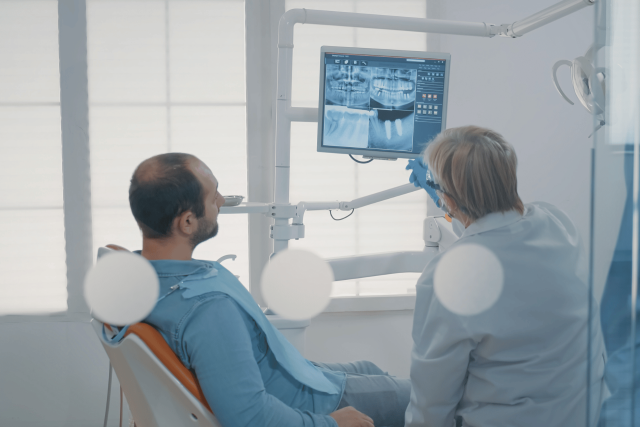Missing teeth create more than just a gap in your smile. Impaired chewing ability, changes in speech, and a decline in self-confidence are common consequences of tooth loss. Thankfully, dental implants offer a durable and natural-looking solution for tooth replacement. Learn more about tooth implants in Singapore here.
What are Dental Implants?
Dental implants are titanium “screws” that are placed in the jaw bone via surgery to function as roots. Crowns or bridges are connected over the implants to replace missing teeth. Unlike traditional bridges or removable dentures, dental implants don’t rely on neighbouring teeth for support, preventing any potential damage to healthy teeth.
Due to rapid technological advancements in the field of implants, tooth implants in Singapore now provide an improved alternative to replacing teeth with a reasonable to good long-term success rate.
Are All Implants Created Equal?
No.
Implants differ based on the materials used, such as titanium and zirconia. Implants also come in various dimensions and surfaces to accommodate various tooth locations and bone volume and quality. And, of course, there are different brands.
An important question to ask the dental surgeon when deciding on implant therapy is to determine the amount of research and technical support the implant brand or company has. You can also go on the internet to check this information.
What are Mini Dental Implants?
These are implants that have a much smaller diameter (usually < 3mm) than conventional implants. They are also more affordable than the regular implants. Generally, these should only be used to replace a narrow tooth like the lower front teeth. Mini tooth implants are too narrow to replace multiple missing teeth or bridges. Also, as they are very thin, they can break if the load on the teeth is too heavy and are difficult to clean.
Tooth Implant Cost in Singapore
Tooth implant cost in Singapore takes into consideration the brand of implant used; how thorough and comprehensive the planning of the implant positions is; the type of X-rays needed (2D or 3D); and, of course, the skill of the surgeon (specialist or general practitioner).
The cost of most tooth implants in Singapore can vary depending on the amount of research and development the implant company has done and the success rates recorded in scientific journals. It is definitely not wise to choose to have an implant with a certain clinic just because it is the cheapest in the market.
The cost of a dental implant with crown starts from around a few thousand dollars.
Implant Surgery: What Can You Expect?
Implant surgery is typically a multi-stage process. Here’s a simplified breakdown of the things you can expect:
- Planning: Meticulous planning involves X-rays, 3D imaging (CT scans), and consultation to determine the optimal implant type, size, and placement location.
- Implant Placement: Under local anaesthesia or sedation, the surgeon accurately inserts the implant into the jawbone through a small incision in the gum tissue.
- Healing and Osseointegration: Several months allow the implant to fuse with the jawbone, a process known as osseointegration.
- Abutment Attachment: Once healing is complete, a connector piece called an abutment is placed on top of the implant.
- Crown Placement: A custom-designed crown, matching the surrounding teeth, is securely attached to the abutment, completing the restoration.
Do Dental Implants Last Forever?
This depends on many factors. Implants do not decay. However, they are susceptible to gum disease, just like natural teeth.
Hence, if the patient smokes, has poor oral hygiene, or has uncontrolled gum disease, then there is a high risk he may suffer from loss of the surrounding bone and lose his implant sometime in the future. The patient’s medical condition and the type of medication he is on also play a part at the time of implant placement as well as in the future.
Implants also have different parts to it (i.e. the titanium screw and the crown that goes onto it). If the planning of the implant position is not done well and there is excessive load on the implant, it may give way as well. Generally, experts recommend keeping the implant load-free for several months.
Also, due to wear and tear, it may be necessary to replace the crown over the implant. That is another reason to choose an implant from a reputable company that will probably be on the market for years to come. Otherwise, the replacement components for the crown or supporting denture may not be available.

What Are Some Of The Factors That The Dental Professional Will Look At When Planning For Implants?
A successful dental implant outcome extends beyond simply replacing a missing tooth. Oral surgeons consider several crucial factors:
Function
The positioning of the implant is essential and should be planned carefully via the use of 2D or 3D x-rays and models (mould) of the patient’s teeth. It is of no use to insert an implant if, at the end of the day, it cannot enhance the patient’s ability to chew or last a reasonable length of time.
Aesthetics
The patient’s smile line is important, along with the thickness of gum tissue and the level of the gum line, in deciding the position of the implant to be placed.
Other considerations include the diameter of the implant used and whether additional procedures, such as grafting of extra gum or bone, are needed.
Sufficient Bone Volume and Adequate Density and Gum Health
A certain amount of bone and gum level and thickness is needed to provide an implant that looks like a natural tooth, and not many patients have the ideal amount. Hence, additional surgeries such as bone and gum grafting may have to be done prior to or at the same time as implant placement to achieve the ideal amount.
Overall, implant therapy should be decided on and planned even before the loss of a diseased tooth. Once the tooth is extracted, precious gum and bone start to resorb or shrink away, and implant placement should be timed appropriately to minimize this shrinkage. There are also other methods to reduce shrinkage if implants cannot be placed soon after teeth extraction. This procedure is known as socket preservation and is usually used if the diseased tooth has had a long history of infection and bone is already deficient around the tooth or if the patient has to delay implant placement due to finances or is too young for it.
Are Implants The Best Choice for Tooth Replacement?
Not necessarily.
All forms and methods of tooth replacement should be discussed with the patient, as well as the pros and cons of each treatment modality before making a decision on implants.
Implants certainly provide a good option to replacing teeth but sometimes the patient’s medical status and other circumstances or oral conditions may not permit its use or they cannot provide for a better aesthetic and functional result compared to the other options.
Key Takeaways
Dental implants provide a life-changing solution for those suffering from tooth loss. They offer exceptional functionality, restore a confident smile, and have the potential to significantly improve your quality of life. If you are considering replacing missing teeth, a consultation with a qualified implant surgeon in Singapore is the first step towards regaining your complete and beautiful smile.
References:
Dental implant surgery, https://www.mayoclinic.org/tests-procedures/dental-implant-surgery/about/pac-20384622,
Implant biomaterials: A comprehensive review, https://www.ncbi.nlm.nih.gov/pmc/articles/PMC4295219/#:~:text=Titanium%20(Ti)%20and%20its%20alloys,%2Dchromium%20alloys%5B3%5D.
Dental Implants, https://my.clevelandclinic.org/health/treatments/10903-dental-implants#procedure-details
Interventions for replacing missing teeth: different times for loading dental implants, https://pubmed.ncbi.nlm.nih.gov/23543525/#:~:text=Background%3A%20To%20minimise%20the%20risk,shortened%20without%20jeopardising%20implant%20success.

